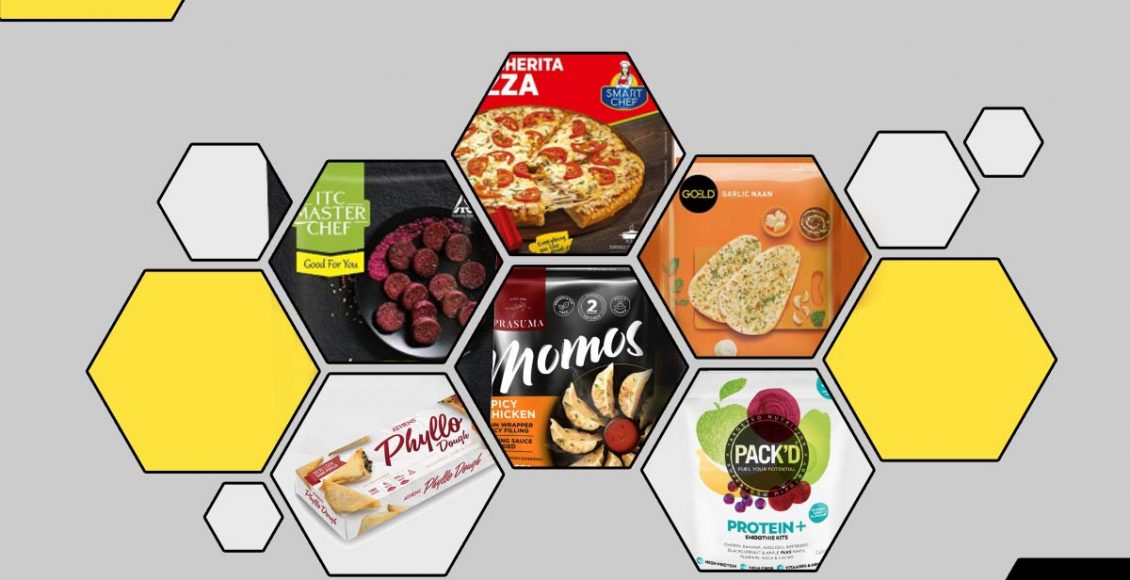
Convenience and Localization to drive the Indian Frozen Food Market
The acceptance of frozen food has gained a good scale among Indian consumers, though it still lags when compared to developed markets. A strong connection to local consumption habits like eating fresh, hot cooked food, dominantly savory pallet, and large family structures have controlled the growth of the category in the past. Even the penetration of refrigerators was not so predominant before the last two decades. However, the past decade has been transformational on many fronts, like increased urbanization, growth of nuclear families, and increased number of working women. Even the penetration of refrigerators has doubled over the past decade of 2015-16, and now one in three households owns a refrigerator, as per National Family and Health Survey. Similarly, there is a conspicuous growth in the number of households owning microwaves and air-fryers, especially in the urban areas. The changes in consumer habits and the marketplace in the last five years are even more conducive for the frozen foods category to reach its true potential.
There is no debate that Covid-19 has created opportunities that increased the acceptance of processed and packaged food. The pandemic has caused the otherwise reluctant consumer to try product categories like frozen food, UHT milk, instant mixes, Retort food, etc., which were subjected to certain inhibition or reluctance in the normal times. As per reports, some FMCG brands have witnessed more than 100% growth during the pandemic and retained over 20% growth post-pandemic. The pandemic has brought in lasting changes in the lifestyle and, accordingly, the needs of the consumers. Other phenomena, which began earlier, like increased internet and e-commerce penetration, increased content consumption through OTT media, promotion of cooking videos, and related content of digital platforms, have played a congruent role during the pandemic. Work from home lifestyle gave considerable spare time to consumers to try out new products, experimentation in the kitchen, and fill the gap of missing eating out.
“Frozen” as a platform holds immense potential and offers versatility to handle multiple product categories and formats, be it in a finished or intermediate form, which enables it to be relevant in both B2C and B2B segments. Also, in terms of product experience, “Frozen food” offers a better sensory experience and is nutritionally superior to similar products processed from other technologies like dehydration, thermal processing, etc. The technology is amenable to process numerous forms of products in categories like Fruits and Vegetables, RTE meals and snacks, fresh and cooked meat and seafood, and intermediate products like semi-cooked breads/ bases, frozen grated cheese, frozen dough, etc. This versatility gives an advantage to the “frozen platform” to address the needs of Indian consumers, which are otherwise tricky through other platforms. An underlying factor to consider is that imparting any form of “convenience” and decreasing “preparatory work” is vital for accepting new products in the marketplace. In the case of frozen products, this can be mainly attained through product formats and, in some cases, coupled with packaging. Some of these product opportunities are described below.
Finished and Intermediate products for Indian cuisines
While the acceptance and demand for traditional products are growing, the skillsets and know-how for making these products are slowly diminishing among the general public. Though the current generation of consumers appreciates and prefers traditional products, they don’t want to spend time and effort making them. Also, the complex flavour profiles of Indian cuisines are not easy to handle and replicate wholesome experiences through other processing platforms, whereas frozen food holds an advantage here. Product options like semi-prepared/ prepared curry mixes, frozen chutneys or their ingredient premixes, and even products amenable to microwave or low oil cooking like semi-cooked “Medu Vada” can be explored.
Premixes for smoothies/ juices and health beverages
“Health and Wellness” is a major driver for growth among the fresh and processed food categories. The acceptance categories like cold-pressed juices, detox-beverages have seen good traction. Product options like fruit and vegetable premixes for use as smoothie/beverage mixes or for consuming as a whole for defined portions are a great option to provide nutrition, convenience, and engagement at the same time. These fruit and vegetable mixes can be accompanied by other ingredients like super grains/ nuts to suit the current market trends. These products offer consumers convenience in reducing preparatory work like peeling, cutting while retaining a level of engagement for preparing and consuming the product and superior nutrition as it will be minimally processed food without any thermal treatment. These product options also promote the scope for increasing the processing of fruits and vegetables.
Frozen dough
While this category is very popular in overseas markets like the US, it is very nascent in the Indian market. There are a growing number of consumers exploring baking at home due to the explosion of cooking videos and as a hobby. This trend provides an opportunity for frozen dough and batters for various products like Cookies, Pizza, Bread, and Waffles, etc., as the quality of dough is an important factor in determining the end product acceptability. Frozen dough offers convenience to consumers by eliminating time-consuming aspects like kneading, proofing, and sheeting while giving a good quality end-product. The frozen dough can also be an excellent option in the B2B segment to address the needs of small-scale pizza chains and bakeries that experience non-cyclical demand and helps in reducing the operational complexities.
Key drivers for the growth of frozen food:
The processed food segments, especially frozen food, are set to experience competition from food delivery services that compete in similar categories and offer better convenience. However, the rising fuel costs leading to increased delivery charges and added pressure on these companies to get into profitable operations provide enough leeway for frozen food to fill the large gaps of consumer needs that exist in-between. The opportunities in the frozen food segment are endless, and with the primed marketplace with aware and willing consumers, it’s up to the companies to be innovative and exploit the potential.
Authors

Connect with Authors at: E-mail foodbiz@sathguru.com
 Grow Beyond
Grow Beyond 

